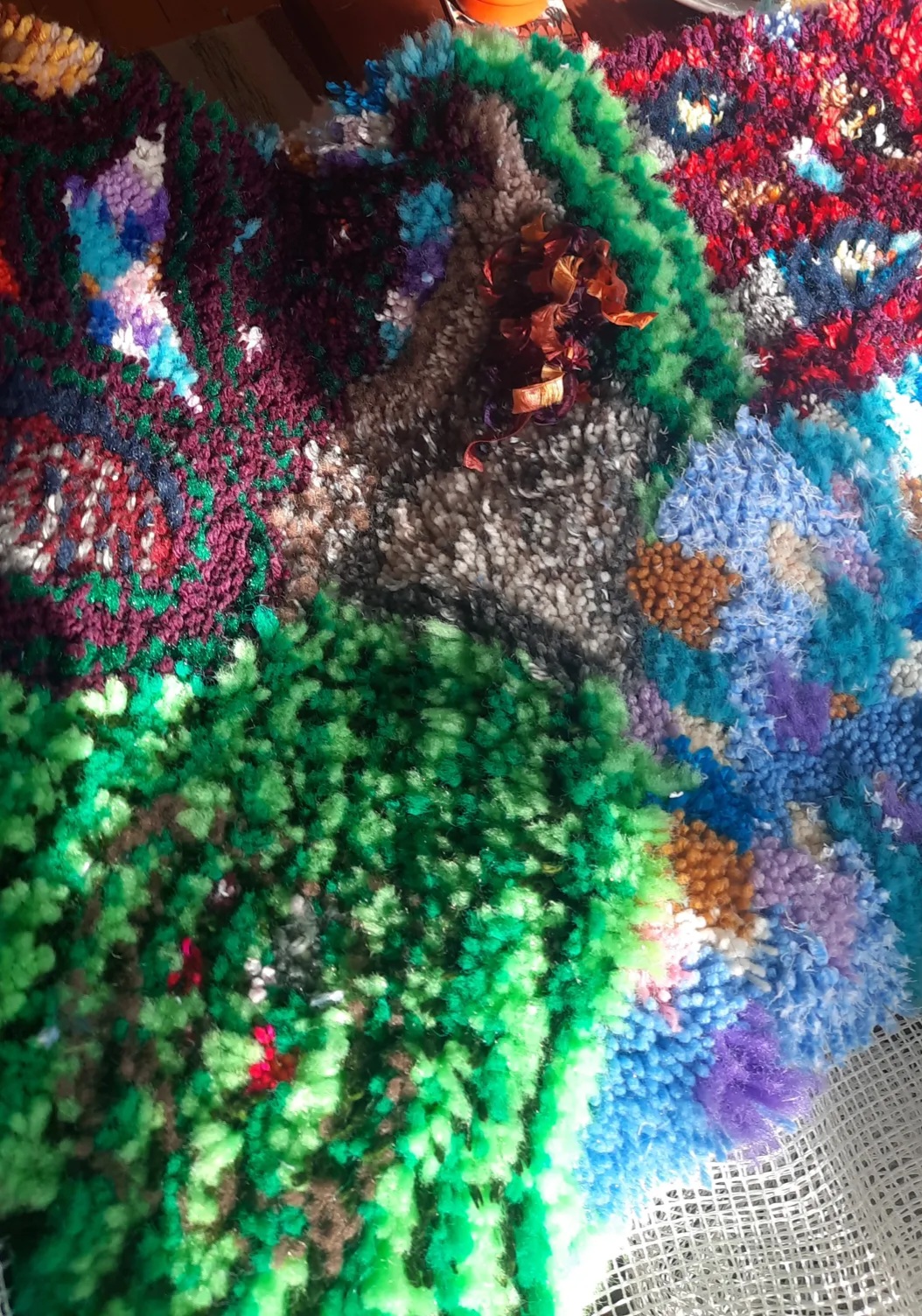Commentary on the Apocalypse ❋ Catherine Fatima
1. Allow the image to emerge.
2. Find and articulate a point of symmetry.
3. Take a bit of pleasure in it.
4. Avow that the pleasure was occasioned by chance.
5. Fill it out.
The first image emerged by transcription:
the mapping of a historical document onto a new surface, the articulation of an image across a grid, pixel by pixel. Authority was delivered by history. It had been passed, reinterpreted, translated, copied, altered, transmitted. The form changed each time; it retained essence; the essence was in the passing off, the trace. A story becomes an image becomes a history becomes a law becomes a relationship becomes a story. Now, I’m drafting in wool, cotton, acrylic and polyester, stretching across my living room floor. I’m winding flexible fibres around firm, starched ones. The inflexibility provides structure and form.
The second image learns from the first,
realized with new principles in mind. The imposition of contrasting colours articulates form better than direct transcription. It abandons imitation in favour of interpretation. On top of that, it’s bigger.
The third image is the largest,
wider than I am tall, and freeform. It’s improvised under the influence of the first two images, under influence of its lineage. Architecture is its main feature: it deals in contrasts and symmetries. It extends, thinning out, from bottom up. This way, I can start at the bottom of the canvas and discover the form as I move with my thighs crossed on the floor, my thinnest skin tickled by the first fibres planted. A pattern is devised and later becomes a prescription. Not total: escapable. Incomplete symmetries pose questions with satisfying answers. A forensics of fruition and design. Visual conclusions satisfy, settle, quiet. When all lines up, the pattern completes. This can extend endlessly in each direction with simple additions. The pattern started with a story. Its form concludes coincident with its explanation.
The first image emerged as an attempt to achieve by structure and planning something where nothing had been. An expanse of time had become suffocating and material seemed sufficient to break its pattern. If I could plan and articulate an image, then I could bind intention and action, culminating in an achievement. Plus, I could do it watching TV. The image was vaguely occultist but this would be occluded.
The first image emerged and subsequently the pleasure of articulating it materially became fervor, expansion, loss of time. Time was lost because memory was unaccounted for in the body’s automatism. The task took me up. The realisation of the object was the perfect demand—perfect because its form was carried out in small circles of resolution. Though I couldn’t remember, couldn’t report, couldn’t talk, there was material left as evidence that something had happened, evidence that could be impressed on the object rather than my consciousness. Throughout, I watched a prank show that wasn’t a prank show, a show about enunciation, performance, and law followed to the letter, researched so the voids in its texture could be filled. The show was on Comedy Central. The motif was loneliness and existential confusion. The point was that you could get people to do almost anything for a bit of money and exposure, but what they wanted to do most was tell you about themselves. Authority was shredded and rewoven on this show, too, just as it was here on my floor as I consumed it endlessly in a haze of material production. My lower body was motionless and only my arms moved. It felt like the base of my body was glued in concrete to the floor, my top replaced with rubber.
First image emerged looking stupid. Second didn’t look so clean either. Repetition perhaps a result of faulty memory existing shakily as its own antidote. Third image looks silly, too, but my recognition has changed. Charm has a sine. Who tells you?
___________________
Catherine Fatima is a writer and translator in Montreal, QC.

